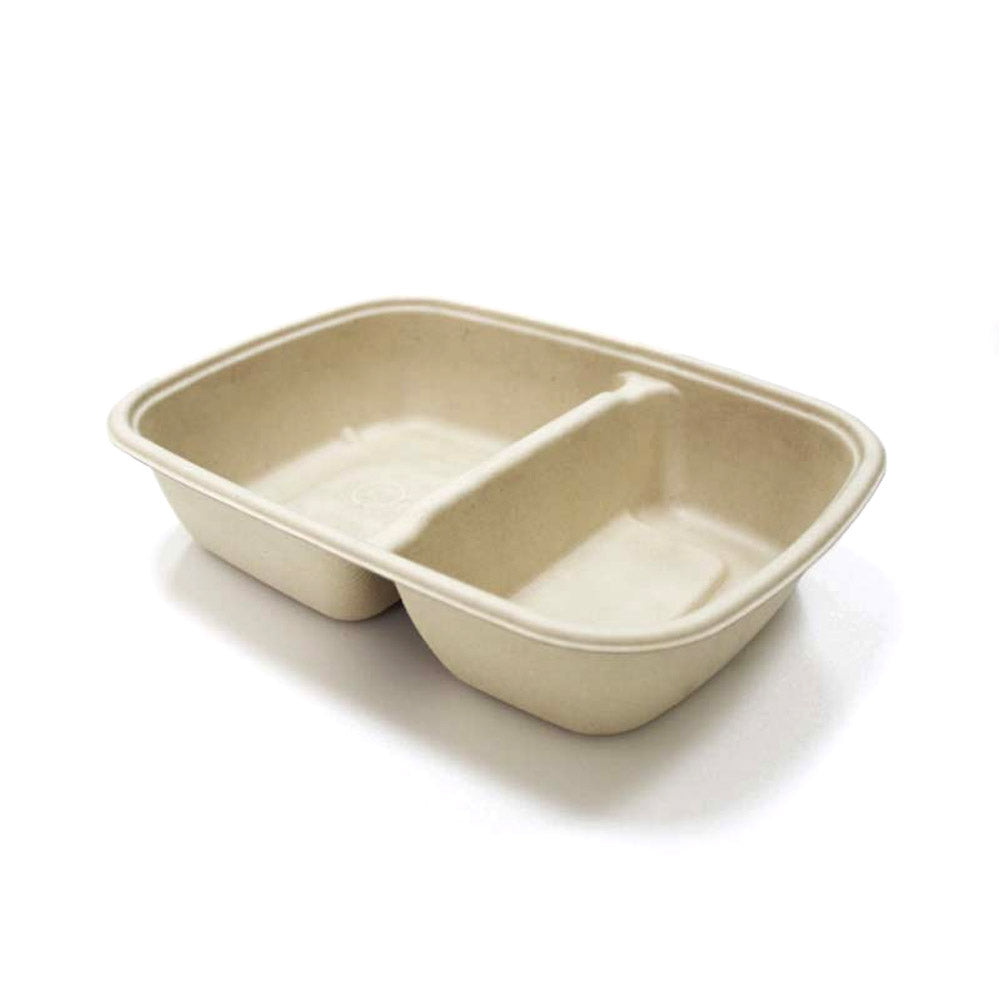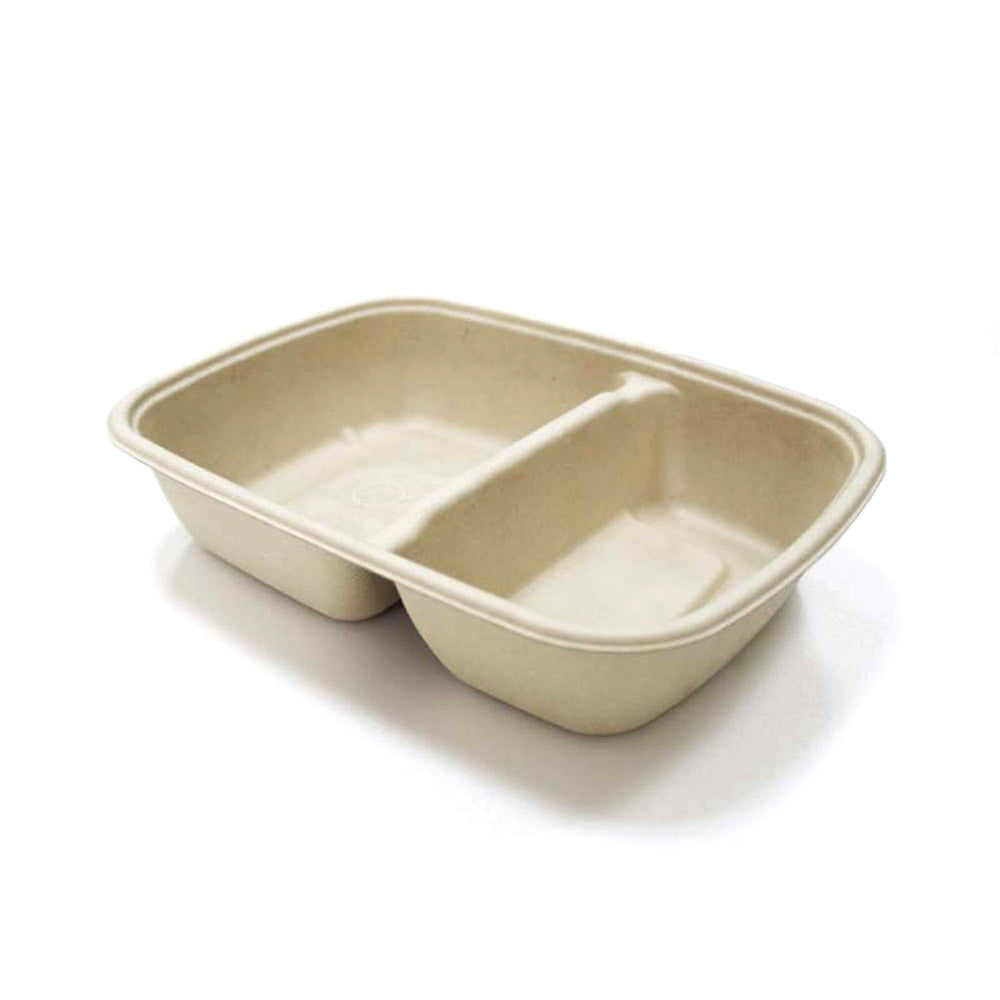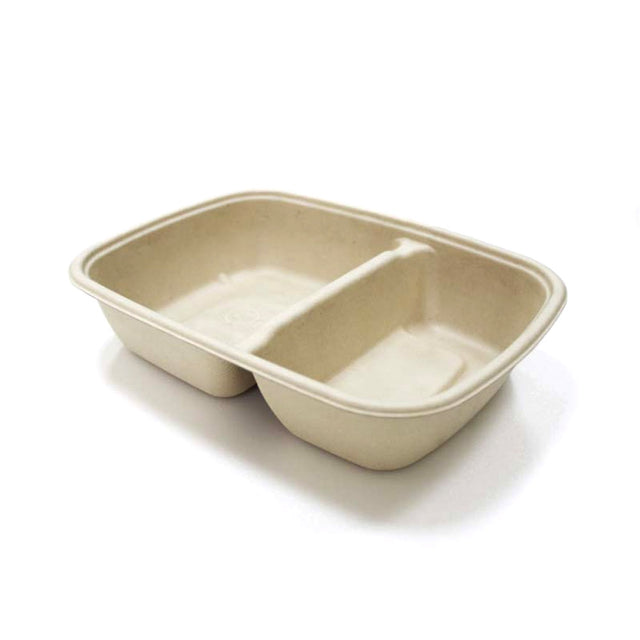30oz Sugarcane 2-Compartment Container (Base Only) - 300 Pcs
30oz Sugarcane 2-Compartment Container (Base Only) - 300 Pcs is backordered and will ship as soon as it is back in stock.
Couldn't load pickup availability
Customer Care
Customer Care
Customer satisfaction is our top priority. Contact us Here for any assistance or queries, and our dedicated team will ensure your needs are met promptly and efficiently. Your feedback is invaluable to us as we strive to provide the best service possible.
📞 Vancouver Office:
+1 (604) 356-0813 (PST)
Description
Description
Sugarcane packaging is formed from sugar pulp (or bagasse) and comes within the plant-based packaging category. This material actively interrupts the waste cycle by allowing plant-based packaging to be returned to the soil as nourishment and foster the growth of additional plants.
Patek Packaging’s Sugarcane 2-Compartment Container (Base Only) breaks down easily in the right environment. It's made from a renewable material that's easy to find. Plus, it has other important environmental benefits and is good for users.
About the Product
Our Sugarcane 2-Compartment Container is the ideal environmentally friendly takeout container for your business or daily meal. This strong container offers 30oz storage in two separate compartments to divide sauces, sides, and snacks. Ideal for takeaways, picnics, or home use, these containers offer the ultimate solution for responsible and hassle-free dining.
Specifications
|
FEATURE |
DETAILS |
|
Price |
$76.95 |
|
Material |
Sugarcane |
|
Dimension (inch) |
6” x 9” x 1.75” |
|
Capacity |
30oz |
|
Colour |
Natural |
|
Case Pack |
300 |
Benefits
- These containers naturally break down in the right conditions. Reduces landfill waste.
- Made from widely available, renewable sugarcane. Support environmental sustainability.
- The two compartments allow for easy separating of different food items to enhance the dining experience.
- Strong and can handle a variety of foods without breaking or leaking.
- Made from natural materials, they are safer than some plastics that might release harmful chemicals.
- Using these containers helps reduce the reliance on non-renewable resources and supports a cleaner planet.
Uses
Food and Beverage Industry
Food packaging is one of the most common uses for sugarcane fibre. They have incredible features, such as being safe for health, using various foods, and being oven-compatible.
Catering and Events
Ideal for events with multi-course menus. Each compartment can accommodate a specific course to ensure that the various elements of the meal remain distinct and well-presented.
Healthcare
Opting for sugarcane containers as a superior alternative to plastic can decrease the release of harmful chemicals that may otherwise impact patients. The compartments provide a convenient way to control portion sizes and organize food groups.
Retail and Supermarket
Grocery stores can use sugarcane containers for packaging fruits, vegetables, and other produce.
Facts
Originally, "bagasse" referred to the waste from pressing olives, palm nuts, and grapes, but it swiftly expanded to encompass the residue from various processed plant products. Nowadays, the term 'bagasse' refers solely to sugarcane residue.
After collecting bagasse fibres from residual sugarcane, they undergo a wet storage phase to eliminate any residual sugar that might hinder subsequent production. Subsequently, the bagasse is mixed with water until the compounds transform into pulp, ready for further processing.
The storage of bagasse varies depending on its intended use. Typically, it is stored before the next processing. For instance, in electricity production, bagasse is stored in moist conditions, undergoing a mild exothermic process that gradually dries the fibres over time.
Choose Patek Packaging
Elevate your commitment to sustainability with our Sugarcane 2-compartment container. Enhance your business identity by demonstrating environmental responsibility while benefiting from cost-effective, durable, and safe packaging solutions.
Frequently Asked Questions
How to know if sugarcane containers are good for your business?
CTV News says that as regulations targeting single-use plastic items become enforceable in Canada, adopting alternative materials like sugarcane fibre is becoming increasingly relevant. Opting for products made from sugarcane fibre or bagasse enhances your company's reputation and provides consumers with higher product quality.
Given their superior attributes and eco-friendly nature, sugarcane fibre products are excellent replacements for plastic packaging. These sugarcane fibre products undoubtedly represent one of the top choices for your food business.
How do sugarcane containers compare to other packaging options?
Sugarcane fibre is a highly effective substitute for paper and traditional packaging materials like Styrofoam and plastic.
Olga Naidenko, a senior scientist claims that styrofoam poses well-documented environmental and health risks. It takes over 500 years to decompose and occupy 30% of landfill space. Approximately 20% of Styrofoam doesn't make it to landfills.
In contrast, sugarcane fibre products offer an affordable and comparable alternative in the food packaging industry. Fruits and vegetables stored in sugarcane fibre packaging experience extended shelf life. The porous nature of these containers allows them to absorb excess moisture that promotes breathability and creates a drier environment for produce.
What are sugarcane containers made of?
- Extra Waxes <1%
- 20%–25% Hemicellulose
- 45%–55% Cellulose
- 1%–4% Ash
- 18%–25% Lignin (a complex organic polymer)
Can these containers be reused for different purposes?
If the container remains in good condition after its initial use, it could potentially be used again for light storage or organizational tasks. However, it's not recommended for repeated use with food, especially hot foods or liquids, as the material may degrade over time. For any reuse, it's important to consider the container's condition and the intended secondary use.



